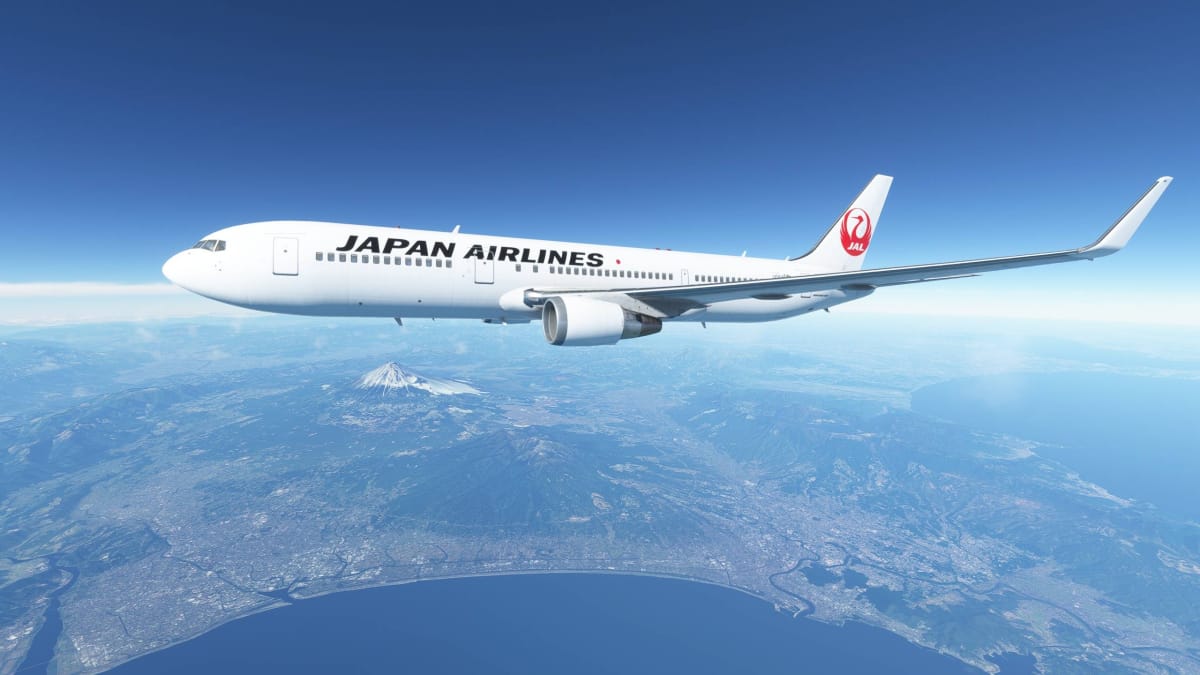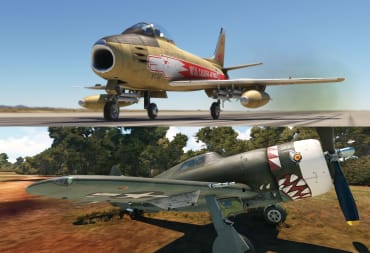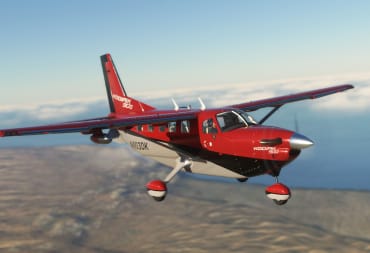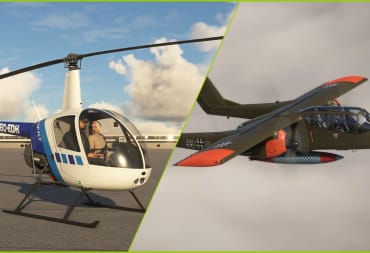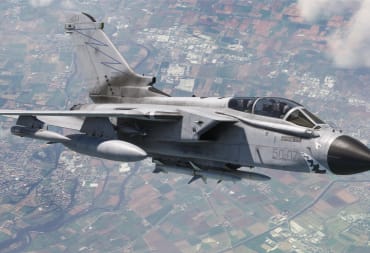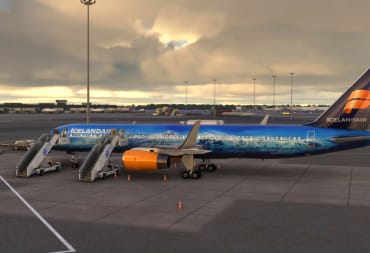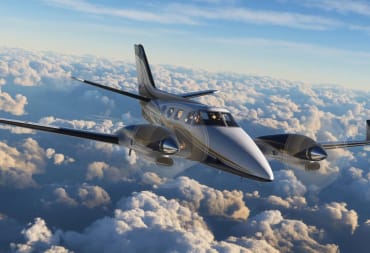A few days ago, RHDSimulations came pretty literally out of the blue with its release of a Boeing 767-300ER for Microsoft Flight Simulator, and today we'll take a look at its relevant perks and flaws. There's a lot to say about both fields.
Yet, first and foremost, there's a big elephant in the room that we need to address: this is not a high-fidelity add-on, and it's far from the (often abused as a marketing beat) definition of "study-level." Its systems are based on the default 747, and while some custom work has been added, it's not intended as an in-depth and granular reproduction of a 767's operations.
It's basically intended as an entertainment product that looks like a 767 and flies loosely close to it, aimed at an audience for whom this is enough. It's not aimed at the hardcore crowd who demands a deep simulation of an aircraft's systems and operation.
Part of the flight simulation community is extremely hostile toward this kind of add-on, going as far as questioning its legitimacy as a product, calling it a scam, and similar controversial comments, so let's get this out of the way: this kind of product is perfectly legitimate and directly responds to a demand from the market. It's not a scam if the buyer is informed about the nature of the product, and especially if the developer made some effort to create something that makes sense instead of just slapping completely unfitting avionics on a cheaply made 3D model and calling it a day.
High-fidelity aircraft for a brand new simulator take a long time to make due to the research and the sheer amount of coding required. As a consequence, it'll likely be at least another year or more before we're able to fly a true-to-life 767 in Microsoft Flight Simulator. Until then, low-fidelity products can fill that gap for those who are fine with them and enjoy simply flying an aircraft that looks and somewhat feels like a 767.
The alternative is not having a 767 at all, and while some hardcore simmers will lean toward that "all-or-nothing" approach, there are many who enjoy this kind of product and it's perfectly fine that they are served.
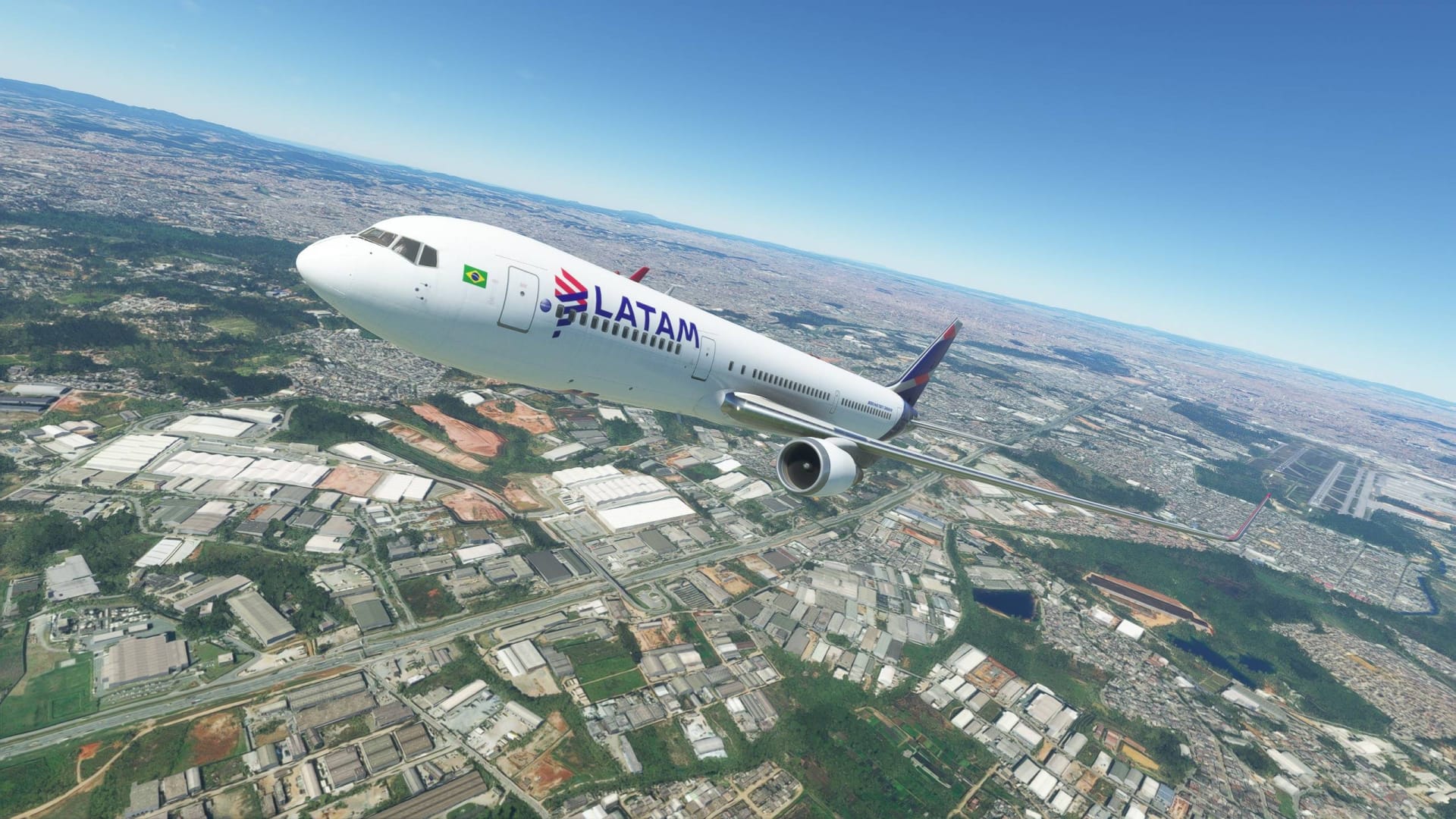
This kind of add-on isn't new to Microsoft Flight Simulator and it isn't even appreciably more common than it was before. It has always been part of flight simulation and has always been polarizing. Some justify their hostility with the idea that it "steals business" for higher-fidelity products, or that it discourages their creation, but that has historically never been true. Those who want a high-fidelity product wouldn't refrain from purchasing a perfectly-simulated 767 when it's finally released just because this exists, and I've never seen reputable developers who create high-fidelity aircraft give up their projects because low-fidelity alternatives exist.
There are already many examples of low-fidelity aircraft that haven't stopped the developers who have the appropriate resources and know-how from announcing, developing, and even releasing their more advanced products. The existence of a (frankly abysmal) 737 MAX since the early months of the sim's lifetime hasn't stopped PMDG from making theirs. The market has provided an (also abysmal) Eurofighter Typhoon just as early, and yet a much better one has been released and another is in the works. The fact that a developer has released several 777 models that are basically just reskinned 747s and a C-130 that doesn't even have a flight deck hasn't discouraged PMDG and Blackbird Simulation from working on their own high-fidelity add-ons of the same aircraft. The existence of the default Airbus A320 hasn't blocked Fenix from launching a very successful study-level simulation of the airliner.
The Microsoft Flight Simulator market is very big and includes a broad range of users with a wide variety of demands. There's plenty of room for both simplified and high-fidelity add-ons, and both fulfill the specific demands of segments of the user base, all of which deserve to be served.
Now that we've kicked the elephant out of the room, we can proceed to determine whether this specific Boeing 767-300ER by RHDSimulations is good or not based on what it offers to its specific target. If you're not part of this target and you only enjoy high-fidelity airliners, you already have your answer and you'll have to wait until an add-on with a deeper level of simulation is released. If you're among those who enjoy flying this kind of aircraft, read on.
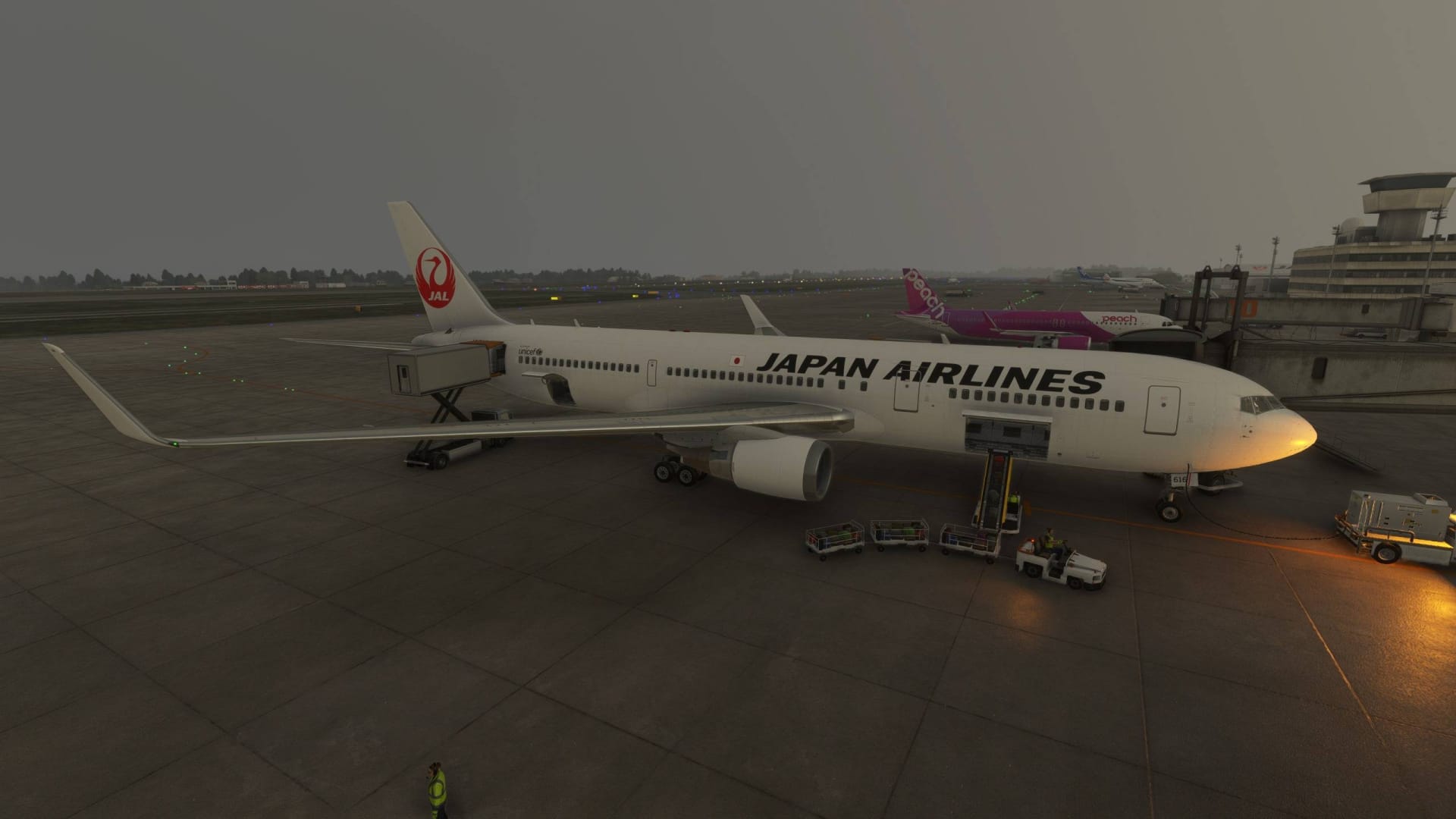
Let's start with the visuals. The exterior of the aircraft is actually quite nice. While it isn't perfect and there are areas with less detail like the pitot tubes and parts of the landing gear, we have a perfectly acceptable visual model here. It even comes with bells and whistles like decals, which not everyone uses just yet, and improve detail very effectively.
PBR is skillfully applied, the weathering on the textures is very well made, and normal maps aptly create the effect of expansion due to pressurization and riveting on the fuselage. Especially if you don't get too close, the aircraft looks very nice indeed. If you do get very close, some imperfections start to appear, but that's true of many add-ons nowadays, including some made by highly reputable developers.
Animations all work fluidly, and wing flex is included and looks rather natural. There are 11 historical liveries included, plus a generic white one, and one specific to the developer. They're well done, but a few relevant airlines that operate large quantities of Boeing 767-300ER with GE engines like the one depicted like Delta or ANA are missing. Adding a few more liveries out of the box is perhaps one of the fields which this developer could improve on without excessively straining its resources.
Moving on to the interior, the flight deck is pretty decent, albeit perhaps slightly on the simple side, especially in terms of texturing. Yet, it has animations you may not expect like the ability to open the windows (including the correct latching mechanism) and to slide the seats back. The lighting is also pretty well done, enabling you to fly at night perfectly comfortably.
There's even a full cabin behind the flight deck, and albeit it's fairly simplified in its modeling and texturing, I'm positive those who love this kind of detail will appreciate its presence. Overall, visuals are certainly this add-on's strongest suit.
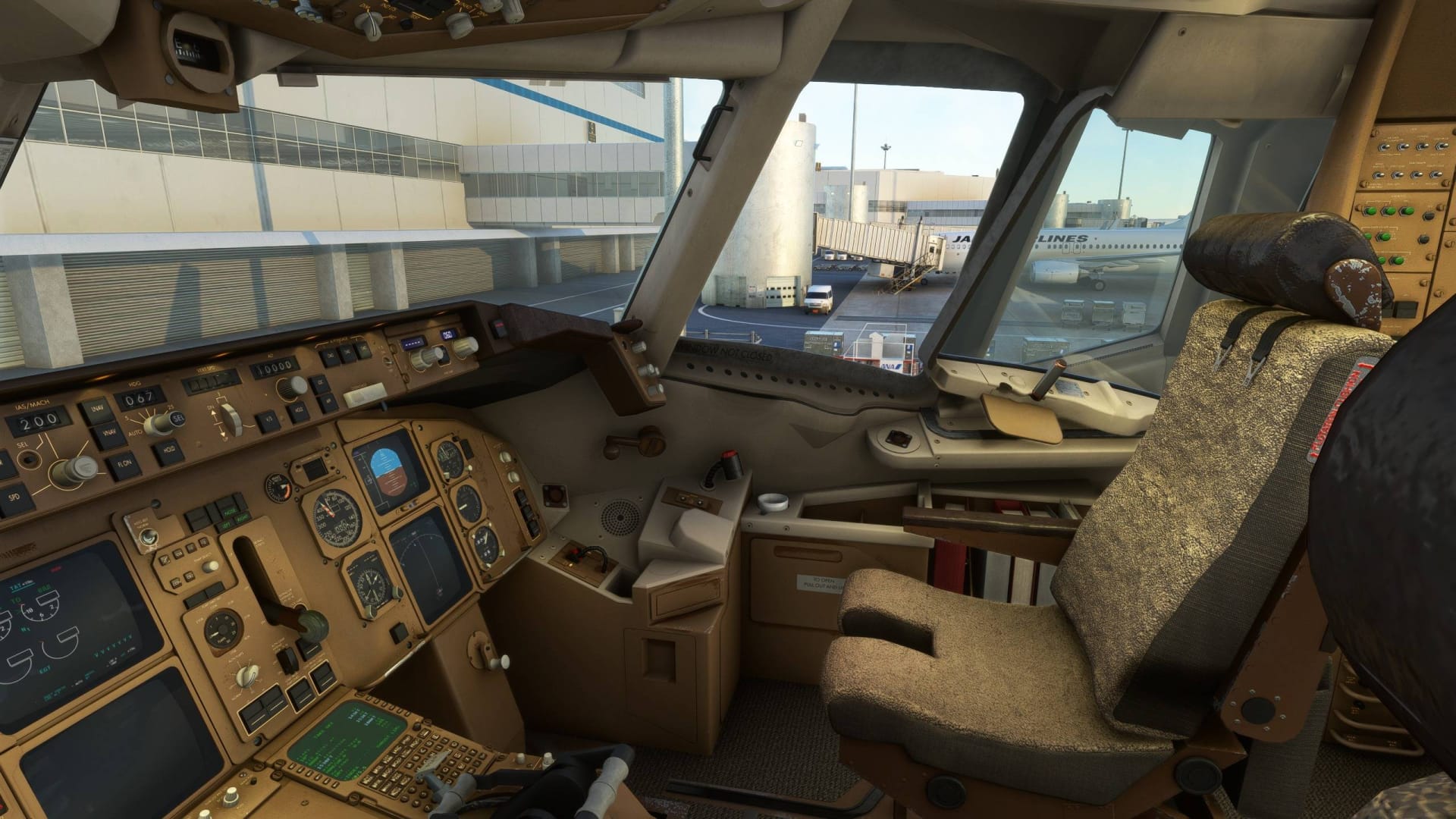
On the other hand, the sounds are definitely the weakest point of this add-on. Not only they aren't great, but they often feel like they're looping and at times they play in incorrect situations. I can hear the engines spool up while the aircraft is cold and dark as soon as I appear at the gate, which is quite immersion-breaking.
As mentioned above, the systems are based on the default 747, but at least the developer has made some effort to extensively redesign the avionics to make them look like those of a 767, which is this package's main advantage over its direct competition. One of the biggest flaws of many low-fidelity add-ons is that the avionics of the default aircraft are just lifted straight out and pasted into the aircraft's screens. In this case, RHDSimulations went a step further than most of the rest in this class of aircraft, and that's laudable.
While many of the controls are inoperative like on the default 747, a few have been reactivated, like the IRS knobs, albeit their functionality is simplified. The fuel indicator on the overhead panel also works correctly, which is a nice touch.
That being said, there are definitely elements that retain their 747 heritage where they shouldn't, like the flaps setting in the "takeoff" page of the FMC that doesn't accept the correct values for a 767 or the "approach" page calculating Vref speeds that appear to be definitely out of range for the model.
Don't expect advanced features like custom LNAV or VNAV (they work just as well as the default 747), holds, or go-around procedures, because they're not available. This means that you may be able to take this aircraft for a spin on online networks like Vatsim, as the basics of the autopilot work more or less fine, but you're likely to cause frustration among the controllers as soon as something unforeseen happens, which is not uncommon.
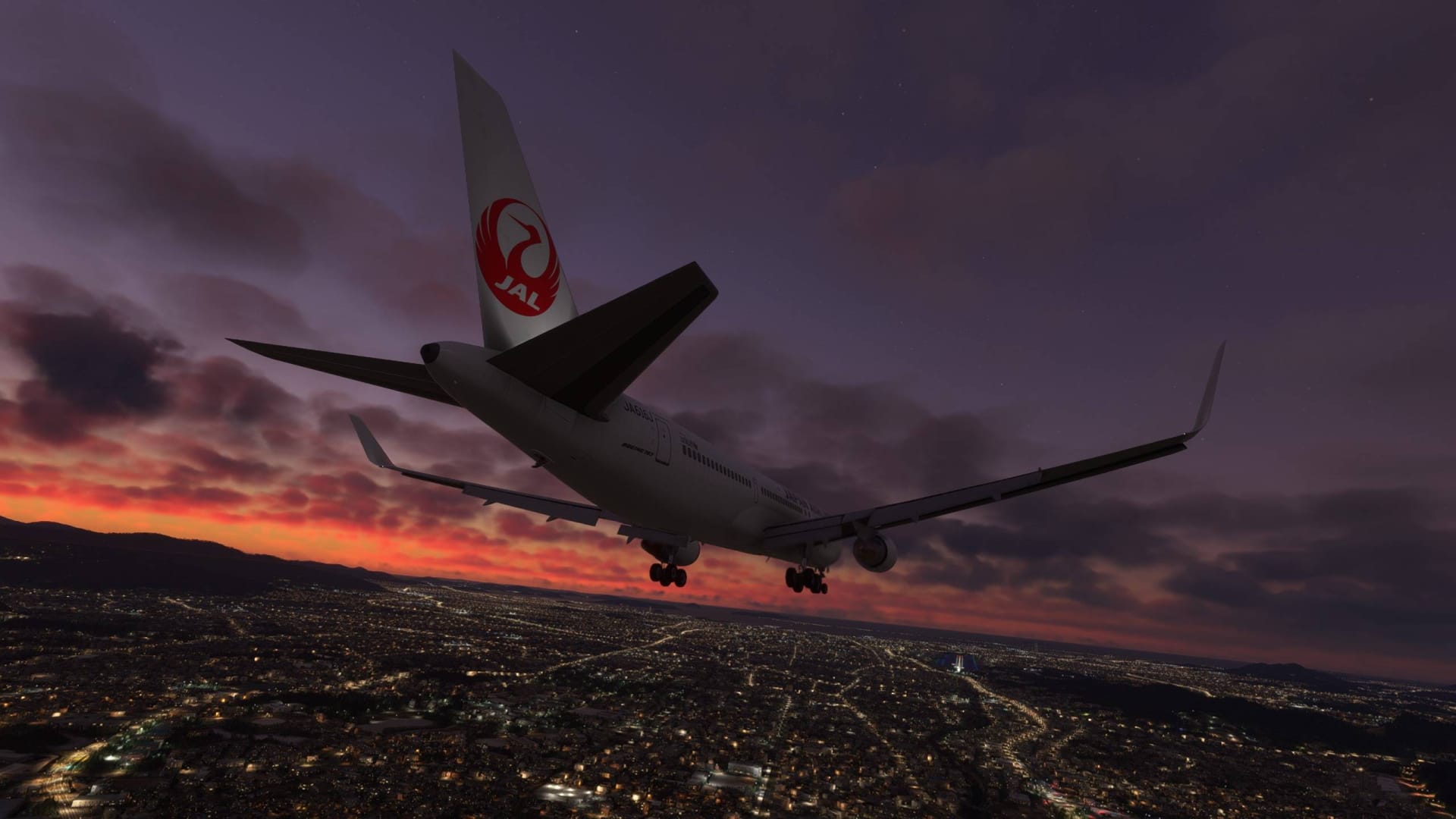
Quality of life features that have started to be rather common like an EFB and Simbrief integration are also absent. On the other hand, if you're used to flying default aircraft in Microsoft Flight Simulator, you'll feel right at home. I suppose an advantage of using the default autopilot is that you'll be able to plan your routes directly on the world map and find them fully entered in the FMC without needing any further action. You can use Simbrief, mind you, but you'll have to either load the route on the world map via file import or enter the waypoints and airways manually.
The flight performance is something that's always hard to judge without being a pilot, but I felt that the engines are likely too powerful while the braking power on landing appears to be far too strong. This thing stops on a dime even on very low autobrake settings. Fuel consumption feels approximately right, but this certainly appears to be a field in which the developer has a lot of room for further improvement.
Basically, this aircraft will let you fairly comfortably fly from your origin airport to your destination, but any procedures beyond that aren't really applicable.
In terms of performance, I was affected by a maddening stutter that reduced my frame rate considerably on my i7-13700K with GeForce RTX 4070 Ti and 32 GB DDR5 RAM. That being said, it doesn't always trigger and I could not find a common cause. I also don't experience it with any other aircraft, making it very confusing. Luckily, I asked around, and this doesn't appear to be a super-common issue, so it may not affect you. If it does, you're not alone and the developer has been made aware of it.
When the issue doesn't arise, performance is perfectly smooth, as there aren't any super-complex systems bogging the simulation down. If you're not among those affected, you shouldn't have any problem using this add-on as long as your PC configuration lets you can fly default airliners comfortably.
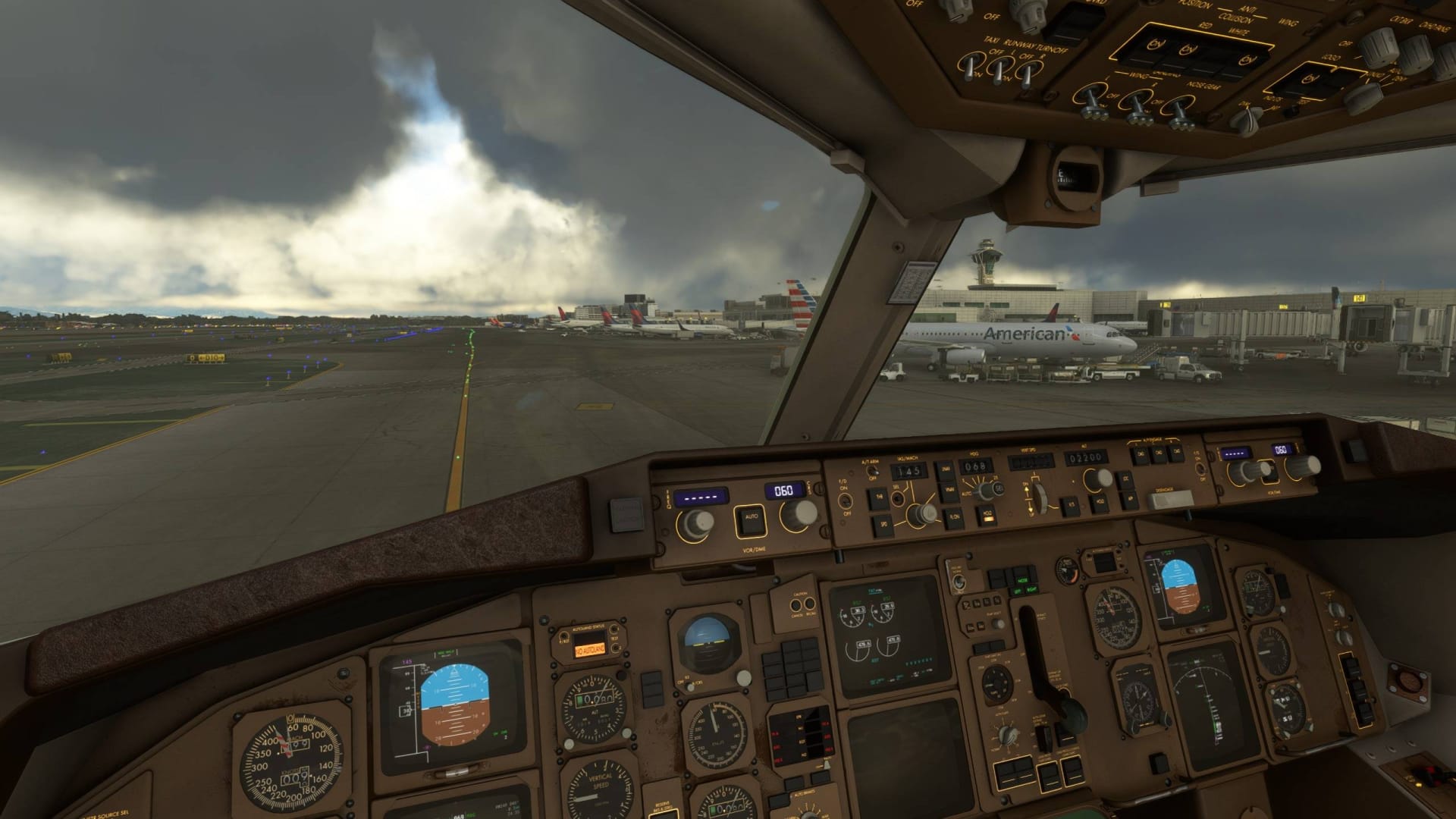
The last consideration I'm going to make is about the price, which is $26.39 plus applicable VAT on Simmarket. Some may find it excessive, especially compared to the very affordable and excellent 737-600 by PMDG. That being said, we have to consider that PMDG is a company that can definitely afford to take a hit on the least popular model of its airliners to draw in customers while charging a pretty penny for the other more popular models.
This 767 embodies two years of work (yes, even something fairly basic like this takes a long time to create) for a one-developer team, who has to rely on an external store to sell their aircraft. This means that a sizable slice of the price will go to the retailer itself. A small operation like RHDSimulations also doesn't benefit from the pricing flexibility bigger developers enjoy, so I would be careful before calling this overpriced. Ultimately, the value of money is different for different people, and you'll have to decide on your own whether the value this offers matches the asking price.
Ultimately, the Boeing 767-300ER by RHDSimulations certainly comes with features that can make it enjoyable for the crowd who enjoys simplified airliners. Personally, it's below what I require from an airliner and I certainly wouldn't use it as a daily driver, but it's acceptable for occasional flights when I want to just sit in the flight deck, take off to a destination a couple of hours away, and enjoy the sights.
That being said, there are a lot of users of Microsoft Flight Simulator that enjoy default-level airliners, and this product is for them, not for me. Seen under that lens, while I believe there is work to be done on several aspects for this add-on to be considered good (primarily sounds, better integration of the FMC, and better tuning of performance and flight model), I would mark it at the very least as a viable option if you love the 767, especially if the developer continues to work on it and improves it over time.
TechRaptor reviewed the Boeing 767-300ER by RHDSimulations for Microsoft Flight Simulator on PC using a copy provided by the publisher.
Review Summary
Pros
- Good visuals overall
- Some bells and whistles like decals, wingflex, and additional animations
- It works fine enough if you only need basic navigation and flight
- A pretty good selection of liveries out of the box
- Effort has been made to make the avionics look correct at a glance
Cons
- The sounds need a lot of work
- The engine and landing performance feel off
- No advanced prodcedures and navigation features available
- Many inoperative controls
- Some incorrect values in the FMC
- Lack of quality of life features
Have a tip, or want to point out something we missed? Leave a Comment or e-mail us at tips@techraptor.net
